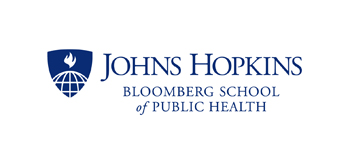Newswise — A new survey conducted during the pandemic by researchers at the Johns Hopkins Bloomberg School of Public Health and the SNF Agora Institute at Johns Hopkins University found a more-than-threefold increase in the percentage of U.S. adults who reported symptoms of psychological distress—from 3.9 percent in 2018 to 13.6 percent in April 2020. The percentage of adults ages 18–29 in the U.S. who reported psychological distress increased from 3.7 percent in 2018 to 24 percent in 2020.
The survey, fielded online April 7 to April 13, found that 19.3 percent of adults with annual household incomes less than $35,000 reported psychological distress in 2020 compared to 7.9 percent in 2018, an increase of 11.4 percentage points. Nearly one-fifth, or 18.3 percent, of Hispanic adults reported psychological distress in 2020 compared to 4.4 percent in 2018, a more than four-fold increase of 13.9 percentage points. The researchers also found that psychological distress in adults age 55 and older almost doubled from 3.8 percent in 2018 to 7.3 percent in 2020.
The survey found only a slight increase in feelings of loneliness, from 11 percent in 2018 to 13.8 percent in 2020, suggesting that loneliness is not driving increased psychological distress.
The findings were published online June 3 in a research letter in JAMA.
The disruptions of the COVID-19 pandemic—social distancing, fear of contracting the disease, economic uncertainty, including high unemployment—have negatively affected mental health. The pandemic has also disrupted access to mental health services.
“We need to prepare for higher rates of mental illness among U.S .adults post-COVID,” says Beth McGinty, PhD, associate professor in the Bloomberg School’s Department of Health Policy and Management. “It is especially important to identify mental illness treatment needs and connect people to services, with a focus on groups with high psychological distress including young adults, adults in low-income households, and Hispanics.”
The survey used a scale to assess feelings of emotional suffering and symptoms of anxiety and depression in the past 30 days. The survey questions included in this analysis did not ask specifically about COVID-19. The scale, a validated measure of psychological distress, has been shown to accurately predict clinical diagnoses of serious mental illness.
Using NORC AmeriSpeak, a nationally representative online survey panel, the researchers analyzed survey responses of 1,468 adults ages 18 and older. They compared the measure of psychological distress in this survey sample from April 2020 to an identical measure from the 2018 National Health Interview Survey.
“The study suggests that the distress experienced during COVID-19 may transfer to longer-term psychiatric disorders requiring clinical care,” says McGinty. “Health care providers, educators, social workers, and other front-line providers can help promote mental wellness and support.”
“Psychological distress and loneliness reported by US adults in 2018 and April, 2020” was written by Emma E. McGinty, Rachel Presskreischer, Hahrie Han, and Colleen L. Barry.
The study was supported by the Johns Hopkins University, the Johns Hopkins Bloomberg School of Public Health, and the Robert Wood Johnson Foundation.
MEDIA CONTACT
Register for reporter access to contact detailsCITATIONS
JAMA
